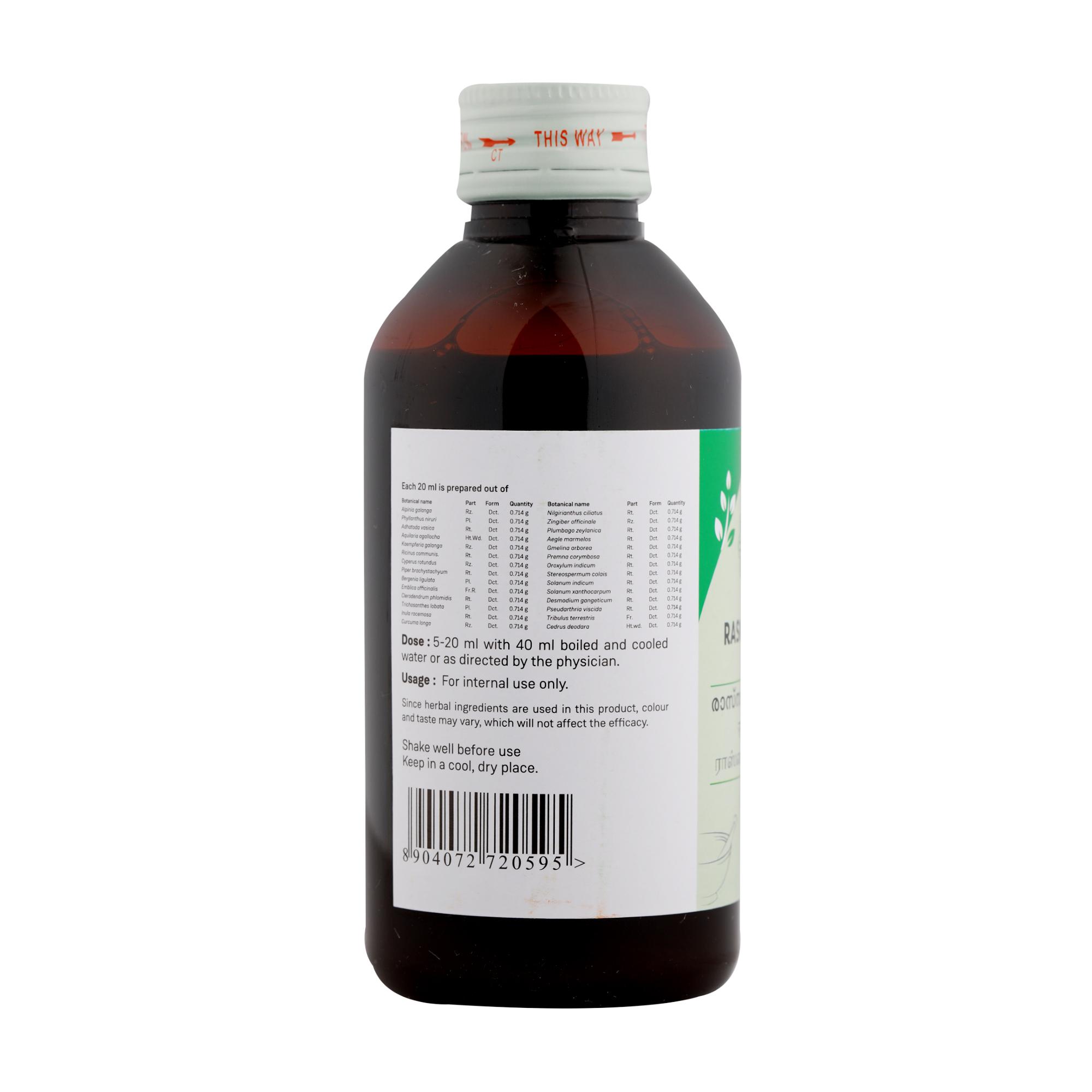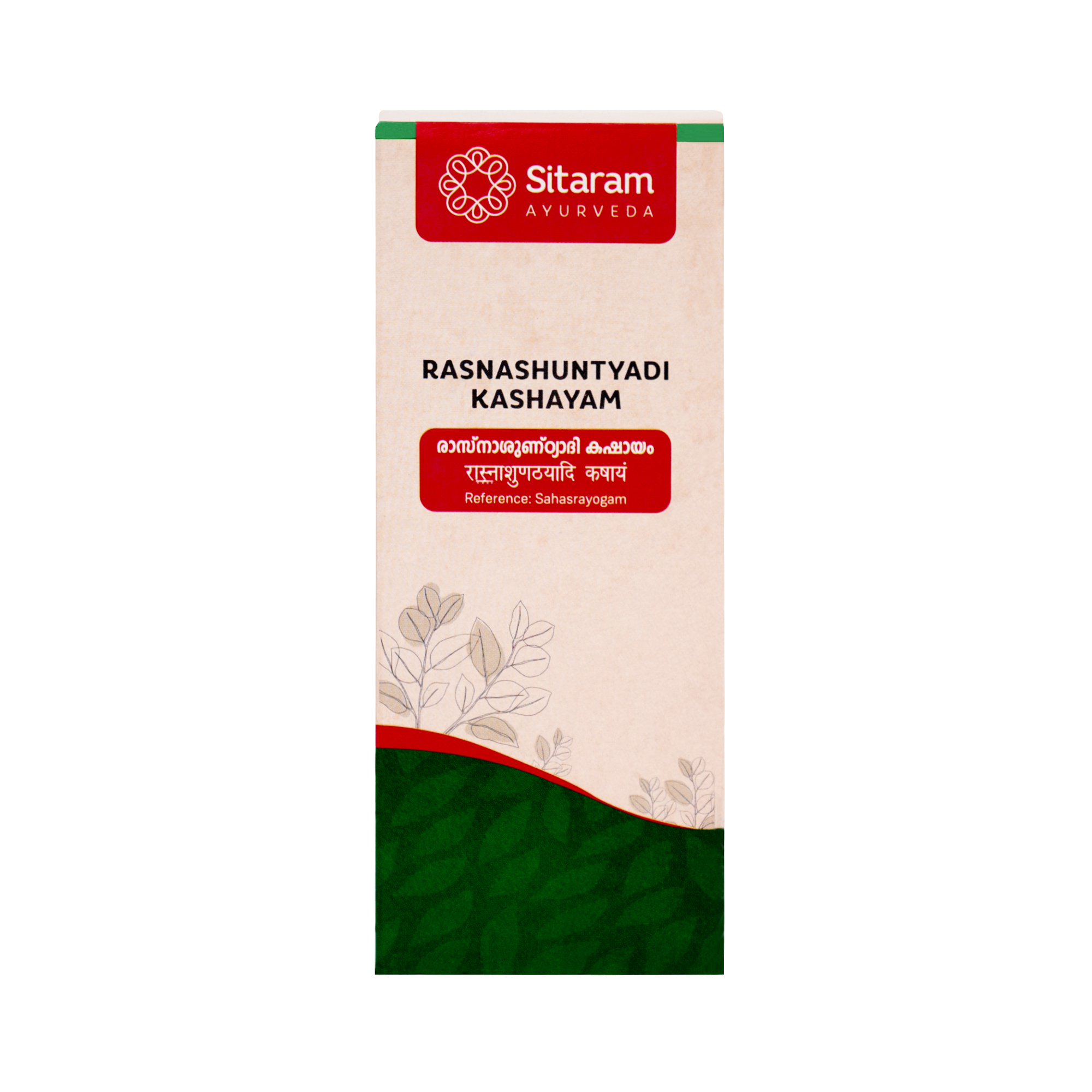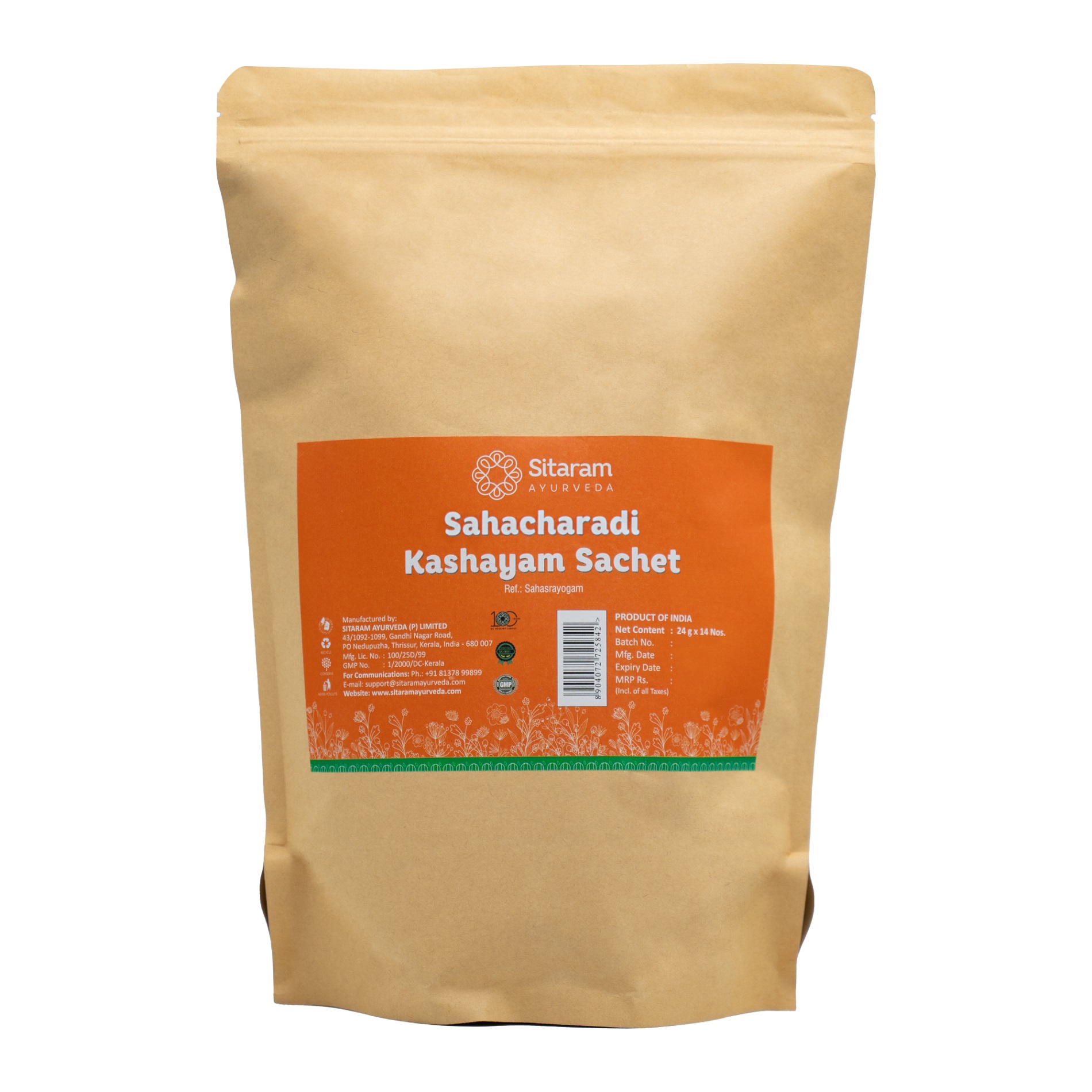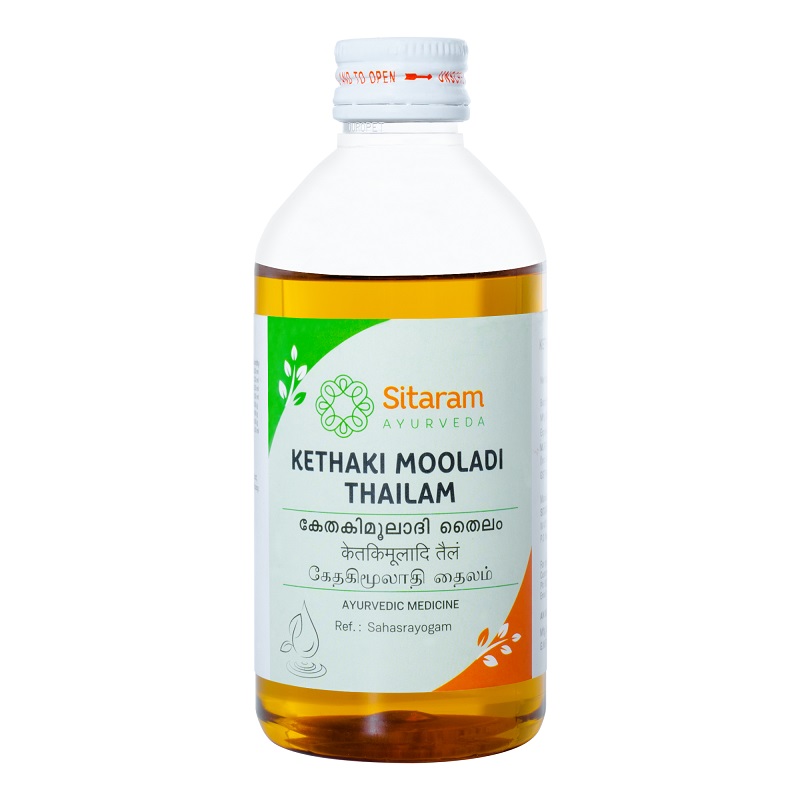Key Ingredients:
RASNA (Alpinia Galanga)
It also known as Alpinia Galanga is an Ayurvedic Medicinal which is a rhizome grown in most of Southeast Asia and is used in cooking and home made remedies. Rasna plant is used in many Ayurvedic medicines in India, Tibet, Africa to help with inflammation, bronchitis, asthma, cough, indigestion, piles, joint pains, obesity, diabetes. The paste of the leaf is also applied externally to reduce swelling.
BHOONIMBA (Phyllanthus niruri)
It is a plant with possible health benefits. It may play a role in treating ulcers and urinary tract stones, for example. However, due to a lack of research, there is insufficient evidence of its safety and effectiveness.
VASAKA (Adathoda vasika)
Vasaka herb is used for treating cold, cough, chronic bronchitis and asthma. In acute stages of bronchitis, vasaka gives unfailing relief, especially where the sputum is thick and sticky. It liquefies the sputum so that it is brought up more easily. For relief in asthma, the dried leaves should be smoked. The juice from its leaves should be given in doses of 2 to 4 grams in treating diarrhea and dysentery .
ERANDA (Ricinus communis)
It is scientifically known as Ricinus communis. All the parts of this herb have medicinal value. Castor seeds and seed oil is used from ancient times to cure disorders like rheumatism, worm infestation, and abdominal disorders. External application of this oil is used to relieve boils, furuncles, and various skin related disorders
CHAVYA (Piper chaba)
It is scientifically known as Piper chaba. It is useful in treating indigestion, abdominal colic, worm infestation, poisoning, anorexia, productive cough, asthma, bronchitis, fever, diarrhea, IBS, hemorrhoids, piles, fistula, chronic respiratory disorders, throat disorders and rheumatic conditions.
AMALAKI (Embilica officinalis)
The benefits of Amalaki are numerous, which part of why it is considered to be the best antiaging ingredient in all of Ayurveda. It is beneficial in metabolism, elimination and normal liver function and excellent for the hair and skin. The fruit is an important source of Vitamin C, minerals and amino acids. It contains three times the protein concentration and Vitamin C (ascorbic acid) concentration than apple.
HARIDRA (Curcuma longa)
The anti-inflammatory and antioxidant properties of Haridra assist in preventing the progression of diabetes related changes in organs like the kidneys, retina, nerve cells and minute blood vessels in the body . The root of the herb, used either fresh or dried, has a host of medicinal benefits. It acts as a carminative and also enhances the complexion and skin-tone. In addition, Turmeric can be used to combat liver damage, respiratory disorders and ulcers.
SHUNTI (Zingiber officinalae )
Due to its strong flavor, Ginger is an essential ingredient in many Asian cuisines. Its therapeutic benefits have been recorded in Ayurvedic and Traditional Chinese Medicine. Ginger is a potent anti-nauseatic and is beneficial in treating upset stomach.Gingerol and shogaol, active components of Ginger, suppress gastric contractions. Both the fresh and dried rhizomes of Ginger suppress gastric secretion and reduce vomiting. The compounds 6-gingerol and 6-shogaol have a number of pharmacological properties, including antipyretic, analgesic, antitussive and hypotensive properties.
CHITHRAKA (Plumbago zeylanica )
It is a potent digestive medicine used for treating a host of ailments including indigestion, constipation, anorexia, abdominal distension, stomatitis, abdominal pain, etc. Imbued with digestive, caustic, stimulant and carminative properties, it eliminates harmful AMA toxins from the body which has accumulated due to malabsorption of food particles.
VILVA (Aegle marmelos)
The Bael tree or Bilva (in Sanskrit) is an ancient Ayurvedic tree known for its spiritual and medicinal importance. It is one of the Dashamoola (group of ten roots) herb. Belpatra is said to have anti-inflammatory properties and can be applied on any inflamed region for quick relief. Bael is said to have anti-fungal and anti-viral properties, due to which it is used in treating a number of infections in our body.
SHYONAKA (Oroxylum indicum)
It detoxifies the blood, cleanses wounds and helps in faster healing.
GAMBARI (Gmelina arborea)
One of the dashamoola roots, it effectively reduces inflammation and improves wound healing. The potent antioxidant properties help in cleansing the blood and removing dullness of skin and wrinkles.
PATALA (Stereospermum suaveolens)
The herb is highly effective in purifying the blood. It also treats burns, wounds, reduces blisters, and provides relief from pain and burning sensation.
SHALAPARNI (Desmodium gangeticum)
The extract is highly beneficial in treating allergic conditions and skin infections and provides relief from redness, itching, and dryness. Being an amazing skin emollient, this prickly dried fruits of the Gokshura tree treats skin infections and inflammatory conditions. It also helps in treating the various signs of aging like wrinkles, fine lines, dark circles etc. and bestows a smooth, glowing revitalized skin.
BRIHATI (Solanum indicum )
The use of Brihati in this oil helps reduce Vata disorders. It treats different types of skin infection and nourishes and rejuvenates the skin.
KANTAKARI (Solanum virginianum)
The Kusthahara property of this herb holds high value in treating skin diseases, helping in wound healing and promoting skin health. Yellow Berried Nightshade is one of the chief ingredients in Dashamoola Rasayanam, an Ayurvedic preparation for the treatment of respiratory ailments. The herb is also a digestive and a carminative, which facilitates the treatment of gastrointestinal problems.
Speciality: 100% Natural. Purely herbal. Vegetarian.


 Sign In
Sign In Cart
Cart 












Reviews
There are no reviews yet.